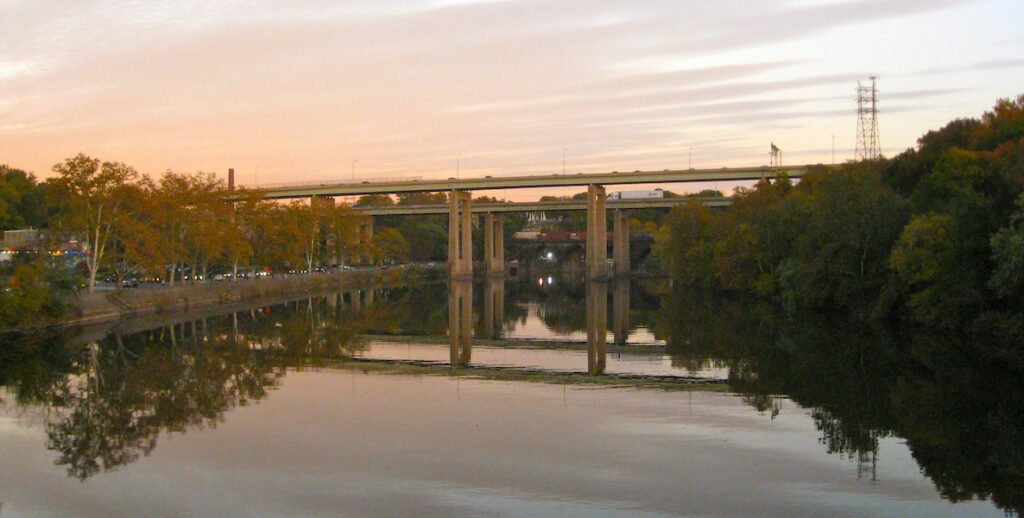The I-95 collapse serves as a wake-up call for Philadelphia. The incident highlighted the pressing need for alternative transportation options that can alleviate congestion, enhance safety, and promote sustainable urban development. One essential solution: the Roosevelt Boulevard Subway. It’s an idea that could revolutionize transportation in Philadelphia, enhance connections, and stimulate our economy.
I started the campaign for the Roosevelt Boulevard Subway in a University of Pennsylvania classroom. My professor was none other than SEPTA CEO and General Manager Leslie Richards. I chose to do my final project on the Roosevelt Boulevard Subway because I know the importance of transportation access.
Growing up in a low-income neighborhood, I had access to opportunities because my neighborhood had access to subway stations. This access does not exist in Northeast Philadelphia, and it angers me. I think about the high school students who couldn’t access jobs or internships like I could. I think about retired residents who couldn’t get to our region’s best hospitals.
Northeast Philadelphians deserve better. They deserve transportation equity.
A Roosevelt Boulevard Subway holds significance for all of Philadelphia. It has the potential to bring about changes to the entire transportation landscape of the city.
Four days after the I-95 collapse, Councilmember Mike Driscoll, who represents the Northeast, introduced a resolution to direct the transportation committee to review the Roosevelt Boulevard Subway proposal, which first surfaced in 1913. The resolution passed. In the 1960s, the City got as far as building a subway station at Roosevelt and Adams Avenue. But since then, SEPTA and the City have mostly pushed off the idea because of the price tag. At last estimate, from 2003, found it would cost $2.5 to $3 billion to construct the subway.
How to build the Roosevelt Boulevard Subway
That is a lot of money, at a time when SEPTA is already struggling with flagging ridership, staffing shortages, and safety concerns. But with Infrastructure Investment and Jobs Act money, the Roosevelt Boulevard Subway could get 50 percent of the project paid for (provided SEPTA meets their local match). Also, discretionary grants and low-interest loans from the federal government like TIFIA 49 could help pay for the project.
It would be worth it. Once operational, the Roosevelt Boulevard Subway would alleviate traffic congestion, enhance traffic flow and improve safety on the Boulevard — one of the most heavily trafficked roads in Philadelphia. It would also have significant impacts on I-95. The last time the subway proposal was studied (1999-2003), it was estimated that it would divert about 83,300 daily trips on I-95 from automobiles to transit. A large parking deck could be built at the proposed Woodhaven station, directly connecting to I-95 giving people ease of access to Northeast Philadelphia and parts south.
The project proposal entails creating a cut-and-cover subway within the 80-foot median of the Boulevard. It also proposes establishing stations designed for optimal construction efficiency and facilitating train operations at intervals of 5-6 minutes during peak hours.
What the Subway would mean for Philly
The anticipated outcome of this project: a significant transformation of the daily commutes of the approximately 500,000 residents in the Northeast. It also would seamlessly connect Center City to Northeast and Bucks County, reduce traffic congestion along both the Boulevard and I-95, benefit the environment, enhance economic development, revitalize Northeast Philly, and improve Philadelphians’ overall quality of life.
A dependable, sustainable car alternative would lead to a decrease in air pollution and enhance the city’s overall air quality.
The Roosevelt Boulevard Subway would also significantly enhance the city’s connectivity and accessibility, facilitating residents’ access to crucial destinations, including employment hubs, schools, medical facilities, and leisure spots. Enhanced connectivity not only promotes social solidarity. It also enables equitable access to opportunities, increasing quality of life.
The investment is likely to yield economic growth: generate interest from commercial entities, streamline trade. It would create jobs during construction and subsequent operation and maintenance. A Roosevelt Boulevard Subway would promote the growth of real estate and augment property prices in the vicinity of the subway route.
A Roosevelt Boulevard Subway has the potential to bring about changes to the entire transportation landscape of the city. The realization of this ambitious endeavor would not only provide advantages to commuters and inhabitants. It would also establish the foundation for a more thriving and enduring future for Philadelphia. It is crucial that our region allocates resources towards this vital infrastructure, giving precedence to the requirements of its populace and serving as a model for other metropolitan areas.
Build the Roosevelt Boulevard Subway.
Jay Arzu is a Ph.D. student in City and Regional Planning at the University of Pennsylvania Stuart Weitzman School of Design and the chief marketing officer at Collective Form, an urban planning and community engagement software.
The Citizen welcomes guest commentary from community members who represent that it is their own work and their own opinion based on true facts that they know firsthand.
MORE POSTS ABOUT SEPTA AND PUBLIC TRANSIT

